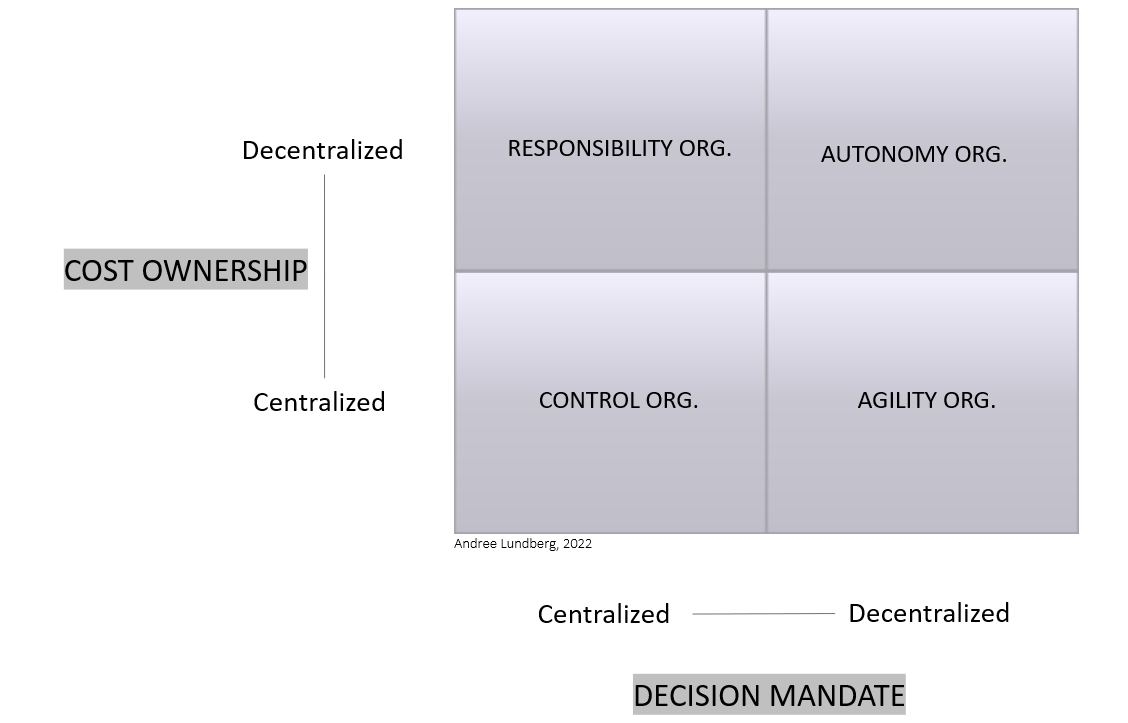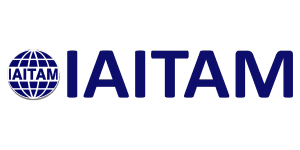What is Decentralization Doing to SAM, and How is SAM Responding?

Introduction
One could argue back and forth if decentralization is already here. Most people will find what they are searching for, and so will those who put their heads in the sand.
This text will argue both that decentralization is upon us and it is already creating pressure on SAM practitioners to adapt.
Hopefully, the reader of this article will find it reasonable that decentralization is usually driven by technology and business disruptiveness.
There is a plentitude of reasons for the SAM community to rethink the absolute polarization between centralization and decentralization. This will enable SAM to change perspective and work in the mixed dynamics with decentralization and centralization.
Centralization has often been at the core of SAM.
The maturity and history of SAM are strengths. Finally, organizations understand the importance of SAM; a discipline within ITAM, well established with certifications and ISO standards. But then again, history is a double-edged sword. The solutions and methods are based on what was effective best practice 20 years ago, or maybe even just five years ago, a very long time within IT. The rise and glory of FinOps is an excellent example of new-ish problems that need new solutions.
SAM has in many ways continually pushed the thesis of centralization. A SAM program shall centralize all assets and ensure a mandate to operate and manage software assets rationally through centrally managed IT. This is in many ways a good principle in managing large amounts of investments in large ecosystems. And in principle, it is difficult to logically argue for a model where organizations do not jointly use assets centrally, which has been seen as the optimal way of using resources for a long time—few advocates sub-optimized software resource utilization within the organization. So, when we all agree that optimization is a must, we tend to push for centralization. But not entirely all of us.
How IT became crucial for innovation and survival.
IT managers struggled to get a place in the management team for many years. For a long time, it looked as if the marketing manager, the finance manager, the production manager, and others had to sit alone with the CEO. But then CIOs began to emerge, over time being a part of the top management as everything in society became more digital.
After a while IT people and digital skills became increasingly important to business success. And over time, digital became not just an opportunity but a crucial part of competing effectively.
Corporate executives push the decentralization agenda through organizational design.
We have stepped into the global and digital era. Disruptive has become as common as cryptocurrency and AI, an ever-increasing challenge. The banks had a monopoly for several hundred years; niche banks and the FinTech industry now challenge them. Where successful multinational giants have built delivery capacity and distribution channels over decades, the challengers can change the industry in a few years due to a lack of history, access to venture capital, innovation, and customer passion. Take some time to look at the different business landscapes you have a knowledge of and how they have changed over the years.
Management at well-established larger companies has resourceful, stable, strong organizations. Often with a solid reputation and a substantial customer base.
But the above strengths rely on ideas of how the market and competition used to be. The disruptive competitors on the rise do not suffer from a successful background.
Yes, precisely what the text stated. Mature and large companies that have been successful tend to continue with what has made them successful. This continues while the market and competition change, and customers welcome the change.
Start-up companies compete with a fresh idea of today’s market and what today’s customers want, based on an innovative vision of the future.
And no matter how well-educated the established corporate executives are, they cannot run companies and create every disruptive idea. The management alone cannot compete with all the global competition and disruptive ideas generated by creative entrepreneurs and developers. More and more corporate executives are giving away resources and mandates to autonomous groups within the organization to boost creativity and innovation.
In many large established companies, more decisions will be made decentralized.
Resources will be used decentralized, and innovation will be created by decentralized teams that work independently or cross over.
Corporate executives establish decentralization of mandates and decisions for innovation and survival. When decentralization is the case, then the dogmatic SAM approach of centralization is not suitable.
In contrast to centralized control, one alternative in a decentralized organization is to enable free software for all. The autonomy of the organization’s subsidiaries puts them in charge of their decisions. In many cases the software assets will belong to the autonomous unit. In the given alternative, the outcome is a melting pot of staggering software spending and compliance. This alternative is perceived by many as the rider of the apocalypse.
Another alternative in the decentralized organization is for SAM to find a new model that can handle the decentralization and implement centralization where suitable. Add to that a SAM function that accepts that many companies reduce centralization and move into an era of decentralization of decisions and asset management.
In the decentralized organization, the SAM team probably no longer has a mandate over costs, agreements, consumption, or software assets since all responsibility lies with the respective unit within the organization. This is precisely the basis for why decentralization arises. The units should be free to work with their resources to create innovation and bring survival to the organization in a disruptive digital market.
Technology is an enabler of decentralization.
We are in a cloud-centric (or infested) world, with disruptiveness all around us. FinOps* teams are getting more people and resources than ITAM ever managed to get for 15 years. New innovational organizational structures emerge, and they are sometimes hard to understand.
Most clearly, we see a decentralization structure joining hands with the DevOps teams resulting in consumption going wild from small groups all over the place. Cloud capabilities are a paradigm shift in the move from centralization to decentralization. Some years ago, IT management briefly mentioned this as shadow IT. We have since then moved away from shadow IT. This cloud consumption is well established and has enabled every unit to consume at their will. The challenges the FinOps teams address regarding decentralized decisions, mandate, and consumption is the perfect picture of what a SAM team is against in a decentralized organization. This is what the paradigm shift to cloud consumption brings.
SAM practitioners to embrace centralization and decentralization.
It is time for SAM practitioners to reassess the state of software and the organizations in which it grows yearly.
First, there is a need to assess the organization in which the SAM program operates.
In many cases the centralization will deviate from the classical best practice even more, so the change goes the wrong way over time. All SAM practitioners much choose their battles wisely. To some extent there is a choice to fight for increased centralization or embrace the current situation and improve Software Asset Intelligence* while the management is decentralized.
The figure below could help start the conversation about the specific organization. As there are no exact findings, the emphasis is on talking, discussing, and reassessing the organization and the SAM program. In some cases, SAM practitioners try to change organizations with autonomous groups or subsidiaries to centralized management with ownerships and decision mandates. This might be the right goal for some organizations, even though it takes a lot of order from top management and takes a lot of change management skills and CXO-communication skills from the SAM Manager.
Another approach might be to accept the nature of the organization and instead aim to provide specific Software Asset Intelligence to each decision-maker and stakeholder in the organization. We are creating centralized Software Asset Intelligence to support the highly decentralized organization.
The SAM might strive to shift from centralization centric to agnostic. This means that educated decisions about SAM are in focus and whether organizations are decentralized or centralized is less critical. There will be a shift from centralized organization to Software Asset Intelligence, and the SAM programs will embrace centralized and decentralized organizational structures. In the same sense, the SAM programs will focus on both centralized and decentralized data. Data should be gathered in an aggregated form in some repository and distributed equally in a decentralized form to provide actionable data for respective stakeholders.
What to do, from dogmatic to pragmatic
Organizational cultures and structures have evolved since SAM was established.
And just like how the FinOps discipline manages the problems at face value and addresses them with a fresh pragmatic approach, so did the SAM practitioners and the SAM programs when it all started.
But older models need to adapt to newer problems, and the emphasis is on adoption.
If SAM wants to make an impact now, it has its chance. But as practitioners we must understand that our value is not in the SAM concept itself. We need to adjust to boundaries and context and align with the organization. Sometimes we see SAM teams pushing squares into triangle holes.
A dogmatic “centralization is everything” approach will not utilize this great opportunity in time, only a pragmatic approach will genuinely do so. For some decentralized organizations, it is time for the SAM practitioners to rethink their strategy. Perhaps shift to increase Software Asset Intelligence instead of fighting for centralization.
*FinOps
FinOps is a relatively new and evolving cloud financial management discipline and cultural practice that enables organizations to maximize business value by facilitating collaboration between engineering, finance, technology, and business teams on data-driven spending decisions. It aims to manage the new types of cloud spending that mostly come from different DevOps teams using cloud computing infrastructure autonomously within organizations. FinOps is short for “Finance” and “DevOps,” but it is also referred to as “Cloud Financial Management,” “Cloud Cost Management,” and other similar terms.
**Software Asset Intelligence
Most of the time, but not always, data sets over time in an automated state. Focus on data for internal use rather than data for external use that is used only for compliance with agreements with software vendors. An emphasis on the data within SAM rather than the management part.
